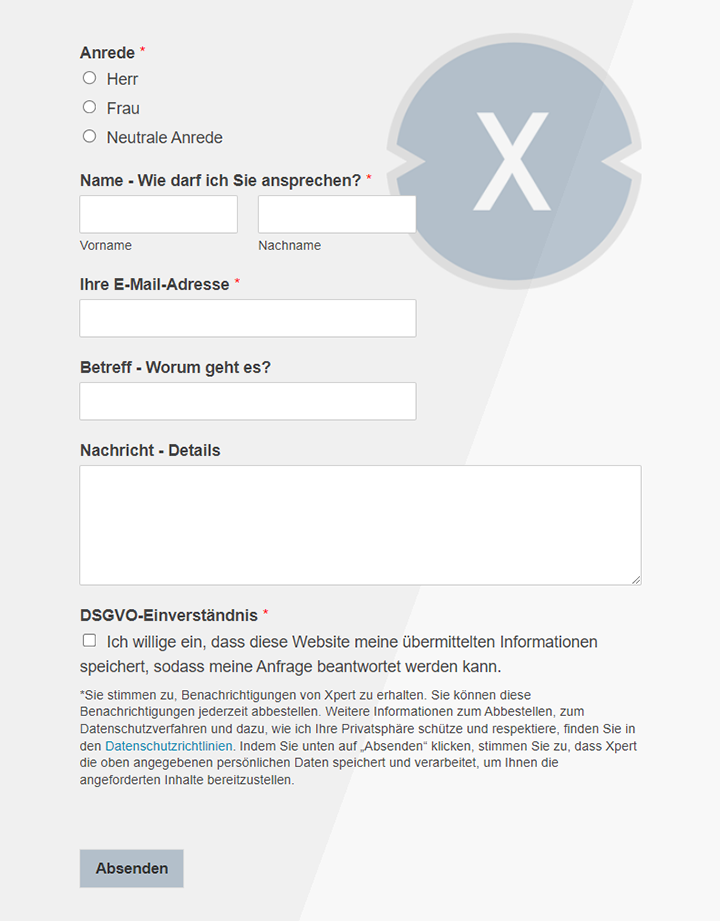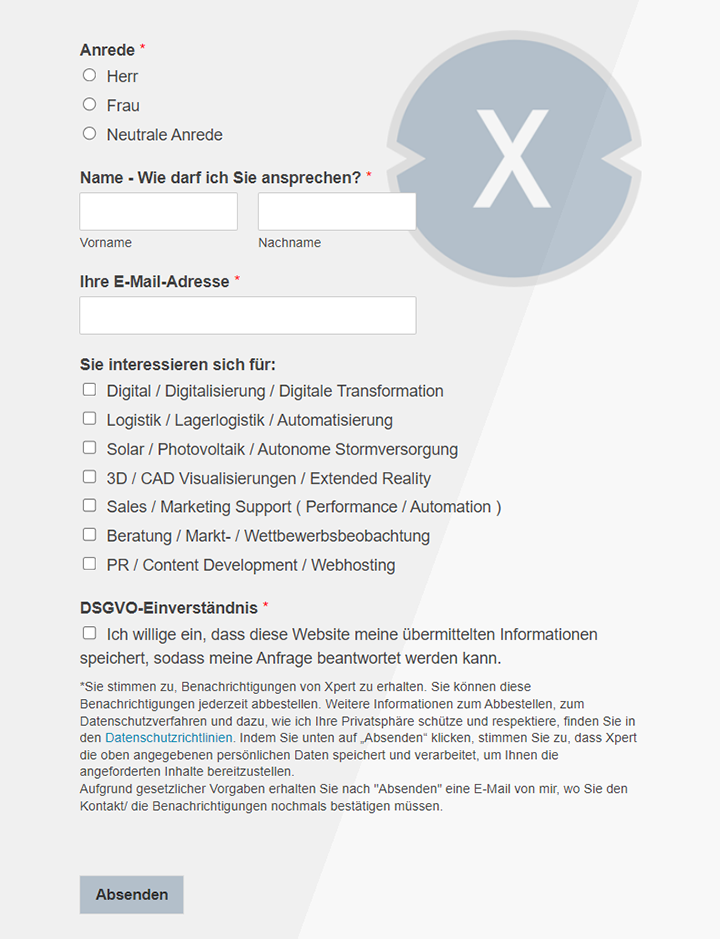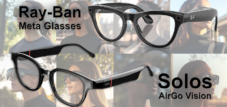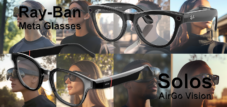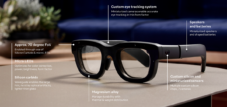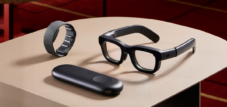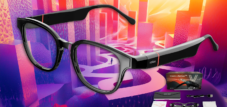AR glasses Light? Meta Ray-Ban Smart Glasses with Augmented Reality Display is coming! Expected to be in the second half of 2025
Xpert pre-release
Language selection 📢
Published on: December 26, 2024 / update from: January 22, 2025 - Author: Konrad Wolfenstein
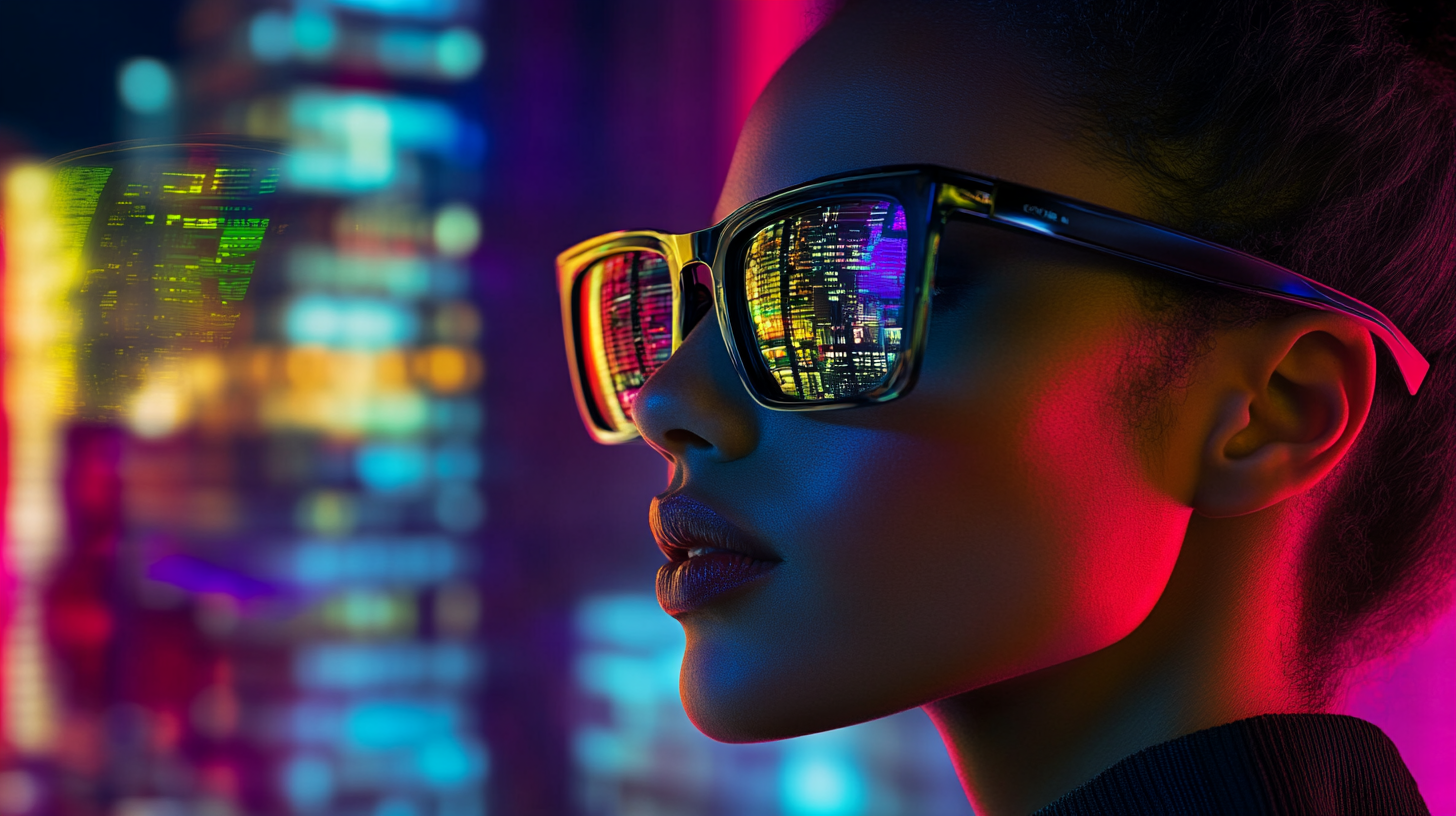
AR glasses: Meta Ray-Ban Smart Glasses with Augmented Reality Display is coming! Expected in the second half of 2025 - creative image: Xpert.Digital
Augmented Reality Light? Meta and the future of smart glasses: Ray-Ban with integrated augmented reality display from 2025
Ray-Ban meets augmented reality: Metas Smart Glasses are entering the next round
Meta plans to launch a new generation of its Ray-Ban smart glasses with an integrated AR display in the second half of 2025. This step marks a significant milestone in the development of wearable technology and shows how Meta is strategically working to enrich users' everyday lives with innovative features.
Suitable for:
A new look at technology: features and improvements
The new Ray-Ban Smart Glasses are said to feature a built-in AR display for the first time, which projects a variety of basic information directly into users' field of vision. Although the AR display is expected to be compact (a so-called augmented reality light version?) and only cover a small part of the field of view, it still offers numerous practical advantages. This upgrade aims to make notifications, navigation instructions and responses from Meta's AI assistant directly visible. Users are no longer dependent on audio output alone, which makes the glasses much more versatile and suitable for everyday use.
What is particularly interesting is the possibility that the glasses can be used for discreet communication with Meta's AI. Instead of pulling out a smartphone, users could directly access simple information such as weather forecasts, calendar appointments or reminders. Such a feature could be a strong selling point, especially for working professionals and technology enthusiasts.
Technological innovation: basis and platform
The new Ray-Ban Smart Glasses are expected to be based on the Qualcomm Snapdragon AR1 Gen1 platform. This advanced hardware offers improved computing power, energy efficiency and therefore longer battery life. In addition, the platform enables a significant improvement in the quality of photo and video recordings that can be made via the glasses' integrated camera.
Suitable for:
Another technical advance is the improved connectivity of the glasses. It should be able to be seamlessly linked to smartphones and other devices, making data exchange easier and expanding the range of functions. Combined with Meta's AI system, this opens up a variety of new possibilities, from voice commands to using smart home devices directly from the glasses.
Matching:
- Advancement in XR technology for the Metaverse, AR and VR glasses: full-color laser for 4K smartglasses from TDK
- TDK's commitment to advancing AR/VR technologies with Mojo Vision, Planar Lightwave Circuits and QD Laser
Market positioning: A strategic move for Meta
With this innovation, Meta consolidates its position in an increasingly competitive wearable technology market. Although the new glasses will not offer a full augmented reality experience, they are an important intermediate step towards advanced AR glasses. What's particularly exciting is Meta's focus on step-by-step development: The new Ray-Ban Smart Glasses could act as a "bridge" between simple smart glasses and fully immersive AR devices like the "Orion" prototype.
Suitable for:
- Project Nazare | Smart Glasses Orion from Meta: The future of augmented reality – extended reality with Metaverse is only a matter of time
- It is a milestone for the extended reality (XR) industry: The new AR glasses “Orion” from Meta – The first real augmented reality glasses?
While Meta's "Orion" glasses were considered too expensive for the mass market, the new generation of Ray-Ban smart glasses appears to be a conscious decision to appeal to a wider audience. This shows that Meta not only prioritizes technological innovation, but also takes market acceptance and price into account.
Competition and market dynamics
The launch of the new Ray-Ban glasses comes at a time of intense competition. Google and Samsung, for example, are advancing their Android XR initiatives, which are also aimed at developing smart glasses. In particular, the cooperation between Google and Samsung to develop a new headset under the banner “Android XR” is seen by many industry experts as a big step towards AR and VR products suitable for the mass market.
Suitable for:
In addition, other providers such as Snap with its Spectacles or Apple with its rumors about possible AR glasses are also developing promising products. The new generation of Ray-Ban glasses will have to compete in this environment by finding a balance between functionality, design and affordability.
Focus on design and user-friendliness
One of the biggest challenges in wearable technologies is the combination of functionality and aesthetics. Since the glasses are developed in cooperation with the renowned fashion brand Ray-Ban, it can be assumed that the design will continue to be a strong selling point. Users should not only buy the glasses for their functions, but also want to wear them as a fashion accessory.
Meta focuses on minimalism and practicality: “Glasses that complement everyday life without being intrusive.” By limiting the display to basic information such as messages or navigation aids, users are prevented from being overwhelmed by an overload of data. Instead, the focus should be on an intuitive, easy-to-use system.
The future of smart glasses is AI and augmented reality
With the introduction of Ray-Ban Smart Glasses with an integrated display, Meta is taking a strategic step towards a more connected future. In the long term, such glasses could serve as a key technology to enable the transition to a world in which augmented reality is an integral part of our lives.
Many companies are already working to develop the next generation of wearable devices that offer more immersive and interactive experiences. For Meta, this is not only a technological challenge, but also a social one: the glasses should not only be useful, but also accepted and integrated into everyday life. Data protection and energy consumption could become crucial issues that determine the success or failure of such devices.
The planned launch of Ray-Ban smart glasses with an integrated display in 2025 could represent a turning point in the development of wearable technologies. Through the combination of an attractive design, practical functions and innovative technology, Meta has the potential to set new standards. However, it remains to be seen how the market and consumers will react to this innovation.
With one foot in the present and one eye on the future, Meta once again proves with these glasses that it is not just a social media company, but a driver of technological innovation that aims to change the way we Interact with technology to sustainably change.
🎯🎯🎯 Benefit from Xpert.Digital's extensive, fivefold expertise in a comprehensive service package | R&D, XR, PR & SEM

AI & XR 3D Rendering Machine: Fivefold expertise from Xpert.Digital in a comprehensive service package, R&D XR, PR & SEM - Image: Xpert.Digital
Xpert.Digital has in-depth knowledge of various industries. This allows us to develop tailor-made strategies that are tailored precisely to the requirements and challenges of your specific market segment. By continually analyzing market trends and following industry developments, we can act with foresight and offer innovative solutions. Through the combination of experience and knowledge, we generate added value and give our customers a decisive competitive advantage.
More about it here:
The integration of a display into Ray-Ban Smart Glasses – A significant step in wearable technology
Advances in smart glasses development
The development of smart glasses continues inexorably, and a notable example of this development is Meta's planned integration of a display into its Ray-Ban smart glasses. This move, expected to occur in the second half of 2025, marks a significant advance in the functionality and user experience of these devices. Until now, users have primarily relied on audio output for information and interactions. The addition of a visual element now opens up a whole new dimension of usage possibilities.
Possibilities and benefits of an integrated display
Although the planned display should be relatively small and only take up a limited part of the field of vision, its importance for interaction with the glasses is immense. It can be assumed that this display will primarily serve to present basic but essential information in a subtle way. Notifications about incoming messages, calls or appointments are conceivable, which are not only signaled acoustically but also visually. This enables faster and more discreet capture of important information without the user having to look at their smartphone.
Next generation navigation aids
Another important area of application for the display is navigation instructions. Instead of having to rely solely on spoken instructions, users could see visual arrows or directional information directly in their field of vision. This would be particularly beneficial in complex environments or when navigating unfamiliar cities, as it distracts the user's attention from their surroundings less than constantly listening to verbal instructions. For example, one could imagine subtle arrows on the display indicating the next turn or displaying information about nearby attractions or shops.
Integration with Meta's AI assistants
Additionally, the display is expected to play a central role in interacting with Meta's AI assistant. Instead of relying solely on verbal answers, users could see short text answers or relevant information directly on the display. For example, summaries of search results, weather information or translations in real time would be conceivable. This visual support would make using the AI assistant much more intuitive and efficient. One could imagine that if you were asked about the opening time of a particular store, this would appear directly on the display, along with possible directions.
The technology behind the new smart glasses
Under the hood of this new generation of Ray-Ban Meta smart glasses is expected to be the Qualcomm Snapdragon AR1 Gen1 platform. This chip represents a significant leap in performance compared to previous models and is essential for the integration of the display and the associated functionalities. The increased computing power not only enables the smooth display of visual content, but also improvements in other areas. This means that the quality of photo and video recordings can be expected to be higher, which makes the glasses an even more versatile tool for everyday life. Improved battery life is also a key factor in wearable technology, and the new chip could have a positive impact here too by making it more energy efficient.
Meta's strategy in the wearable market
With this further development, Meta is strategically positioning itself in the growing market for portable technologies. Although the planned glasses do not yet offer the full immersion of a augmented reality environment, they are an important step in this direction. Meta seems to consider this development as a kind of transitional technology, a bridge between the current smart glass and future, more advanced AR glasses, as indicated, for example in the “Orion” prototype. This prototype, which already included more advanced display technologies, was considered too expensive for the mass market. The integration of a smaller, less complex display into the Ray-Ban Smart Glasses could therefore be a clever move to make the technology accessible to a wider audience and at the same time gain valuable experience for future developments.
Potential, challenges and competition
Integrating a display into Ray-Ban Smart Glasses has the potential to make users' everyday lives much easier and make the glasses a more useful and versatile companion. The ability to access information discreetly and without constantly reaching for a smartphone could lead to increased efficiency and an improved flow of information. However, it remains to be seen how well Meta will master the balance between functionality, attractive design and intuitive usability in this new generation of smart glasses. Wearing comfort and aesthetic appearance play a crucial role in user acceptance of wearables.
It is also important to consider this development in the context of the activities of other large technology companies. The announcement of Google and Samsung's joint Android XR initiative, which also includes smart glasses and augmented reality applications, shows that competition in this area is increasing. Google's Android These developments suggest that we are entering an exciting period of innovation in wearable technology, with various companies vying for dominance and attempting to define the next generation of computing platforms.
Lessons from previous developments
The introduction of the Ray-Ban Smart Glasses with a display could also be interpreted in response to previous experiences and feedback from the market. The “Orion” glasses, with its more advanced display, met with great interest, but has so far not been produced in series due to its high price and complex technology. The upcoming generation of the Ray-Ban Smart Glasses therefore seems to rely on a more pragmatic approach by integrating a less complex but still useful display in order to expand functionality without driving the costs to unaffordable heights.
Focus on notifications and interactions
The display's functionality, which is expected to be limited to notifications and interactions with Meta's AI, suggests that Meta is initially focusing on basic but commonly used use cases. This could be a smart approach to promote adoption of the technology while gathering valuable data and experience for future, more complex applications. The challenge will be to design and integrate the display in such a way that it does not distract or overwhelm the user, but rather represents a natural and intuitive extension of their perception.
Technological basis: The Qualcomm Snapdragon AR1 Gen1 platform
The technical aspects, especially the use of the Qualcomm Snapdragon AR1 Gen1 platform, are another important factor in the success of the new smart glasses. This platform not only provides the necessary computing power for the display, but also advanced image processing and artificial intelligence capabilities that will be crucial for future applications. The chip's improved energy efficiency could also help extend the battery life of the glasses, which is a critical factor in the everyday usability of wearables.
Market positioning and evolution of the product
In terms of market positioning and future prospects, it is clear that Meta is taking an important step towards augmented reality with these smart glasses. Although the glasses won't offer a full AR experience yet, they pave the way for future developments and allow users to slowly get used to integrating technology into their everyday clothing. Meta apparently sees this development as an evolutionary process in which the Ray-Ban smart glasses with display represent an important intermediate step on the way to more advanced and immersive AR glasses.
Suitability for everyday use through intelligent integration
The integration of a display into Ray-Ban Smart Glasses could actually change the everyday lives of many people. Imagine walking through a foreign city and receiving discreet navigation instructions right in your field of vision without having to constantly look at your smartphone. Or you can receive important notifications without having to interrupt what you are currently doing. Or you can quickly access AI assistant questions without having to speak out loud. These scenarios illustrate the potential of this technology to transform the way we interact with information and our environment.
Challenges: data protection and ethical aspects
However, it is also important to consider the potential challenges and concerns associated with this technology. Data protection is a key issue, especially for devices equipped with cameras and microphones. It will be crucial that Meta implements transparent data protection policies and gives users control over their data. Ethical issues surrounding facial recognition and the potential misuse of the technology also need to be carefully considered and addressed.
Design and user-friendliness as success factors
In addition, the design and user-friendliness are crucial to the success of smart glasses. The glasses must be comfortable to wear, look good and integrate seamlessly into the user's everyday life. Complicated operation or a bulky design could hinder the acceptance of the technology. With the Ray-Ban brand, Meta already has an established name in the eyewear fashion sector, which could be an advantage in promoting the acceptance of smart glasses.
A significant step towards the future of wearable technology
Meta's planned launch of Ray-Ban Smart Glasses with an integrated display represents a significant step in the development of wearable technology. This innovation has the potential to fundamentally change the way we consume information and interact with our surroundings. Although many questions remain unanswered, especially in terms of design, usability and data protection, it is undeniable that with this development Meta is making an important statement in the competition for the future of computing. The second half of 2025 will show how well Meta has mastered the challenges and whether the Ray-Ban smart glasses with display will actually become a useful and sought-after companion in people's everyday lives. Competition from initiatives like Android XR will further increase the pressure to innovate and accelerate development in this exciting technology field.
We are there for you - advice - planning - implementation - project management
☑️ SME support in strategy, consulting, planning and implementation
☑️ Creation or realignment of the digital strategy and digitalization
☑️ Expansion and optimization of international sales processes
☑️ Global & Digital B2B trading platforms
☑️ Pioneer Business Development
I would be happy to serve as your personal advisor.
You can contact me by filling out the contact form below or simply call me on +49 89 89 674 804 (Munich) .
I'm looking forward to our joint project.
Xpert.Digital - Konrad Wolfenstein
Xpert.Digital is a hub for industry with a focus on digitalization, mechanical engineering, logistics/intralogistics and photovoltaics.
With our 360° business development solution, we support well-known companies from new business to after sales.
Market intelligence, smarketing, marketing automation, content development, PR, mail campaigns, personalized social media and lead nurturing are part of our digital tools.
You can find out more at: www.xpert.digital - www.xpert.solar - www.xpert.plus




